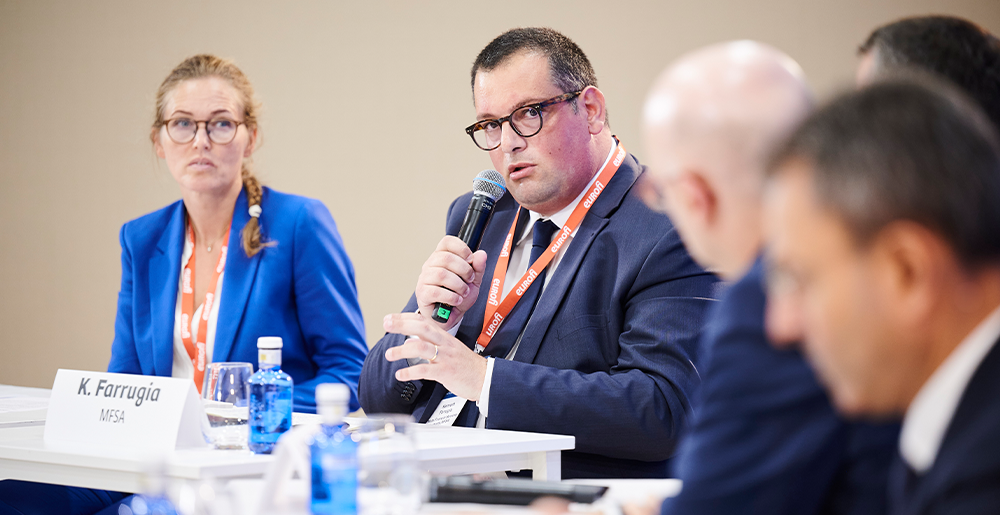By Kenneth Farrugia - Chief Executive Officer, Malta Financial Services Authority (MFSA) [1]
After several years of legislative processes, the Anti-Money Laundering Package, comprising three regulations and a directive is nearing its final stages.
The creation of a supranational AML/ CFT authority (AMLA) is one of the major developments being proposed, and is intended to improve supervision across all sectors, by coordinating and directly supervising high-risk entities, particularly credit and financial institutions operating in multiple Member States. A driving factor behind the setting up of AMLA was the variation in the level, quality, and effectiveness of supervisory practices across Europe, leading to money laundering scandals involving European credit institutions.
While the AML package offers promising solutions, the eventual establishment of AMLA does present its own challenges. Its role is undergoing somewhat of a metamorphosis with each successive review of the Commission’s proposal. The number of selected entities possibly subject to direct supervision has been increased by both Council and Parliament, and so has its mandate when it comes to restrictive measures. There have been repeated warnings that this will require AMLA to have an ever more substantial budget to, amongst others, recruit additional staff and bolster its technological capabilities.
Financial implications apart, can AMLA find the necessary human resources to effectively and efficiently execute its mandate? Technology will only go so far– ultimately you will need qualified, experienced and creative people to take decisions, and those are in short supply. Recruiting and retaining staff in this area has always been challenging, with authorities having to compete with one another for a limited pool of talent. AMLA’s responsibilities will require additional skilled professionals which may potentially strain the human resources capabilities of national authorities as they lose their skilled regulators to the supranational body. AMLA must also tackle cross-cultural and language barriers to foster effective communication and collaboration among its staff and with the various national supervisory authorities.

Technology will also feature high on the agenda, be it as a means to facilitate the compliance by entities, or as a medium that creates new vulnerabilities within the AML/CFT system. The European Banking Authority has already been active in this area but with the AML Rulebook Regulation casting a wider net when it comes to CASPs, while also seeking to address uncertainties surrounding Virtual IBANs, AMLA will need to keep up the momentum in the technological sphere. It might also need to consider the reconciling of products, like instant payments, within the overall AML/CFT framework, but especially, transaction monitoring and reporting obligations, as well as possible new threats such as NFTs and the metaverse.
To ensure transparency and prevent illicit activities, advanced technological solutions must be deployed to verify beneficial ownership information and safeguard against the misuse of corporate structures and robust monitoring. Tracing solutions will also be necessary in the realm of cryptocurrency, demanding innovative technological approaches. AI and Machine Learning Compliance represent a significant opportunity for enhancing AML/CFT efforts while information sharing and collaboration platforms, such as the EU AML database EuReCA, play a pivotal role in fostering greater cooperation among financial institutions and supervisory authorities.
The other main building block of the AML Package is the AML Rulebook Regulation which sets out the AML/ CFT obligations for entities. Moving away from a directive to a regulation as the instrument of choice will limit as much as possible any arbitrage between Member States while also ensuring as uniform as possible an application of the same AML/CFT obligations in each one.
From a European perspective, one could say that the creation of single rulebook and a single supra-national authority with direct supervisory powers was only a question of time. Money knows no border and neither does crime, and in an area created to facilitate and incentivise cross-border activity it was necessary to set overarching rules that do not allow for national influences. The project has suffered some delays, albeit this was to be expected due to its highly sensitive nature one and everyone wanting to contribute to develop the best possible solution.
Regulatory uncertainty may arise during AMLA’s initial stages, as it navigates scope, powers, and interactions with existing supervisory bodies and national authorities. Addressing the technological and human resource challenges will be critical for its success. By overcoming these challenges, leading by example and fostering greater cooperation and consistency, the EU can bolster its financial system’s integrity and enhance its credibility in the global fight against financial crime.
[1] This article first appeared in Views – The Eurofi Magazine

